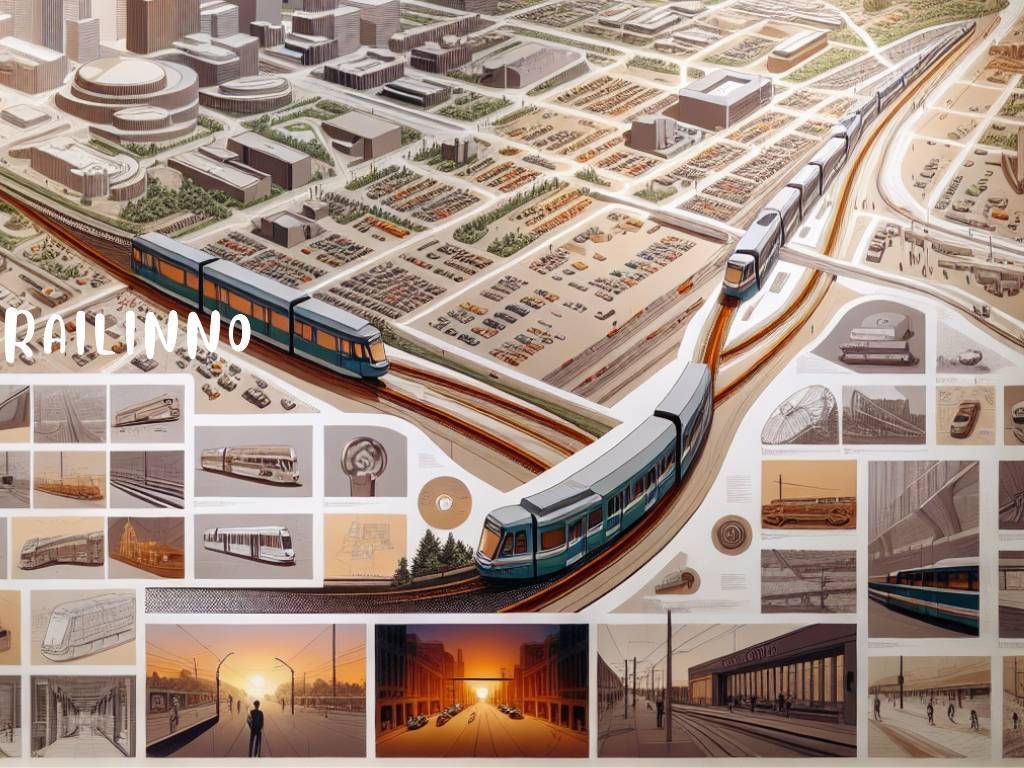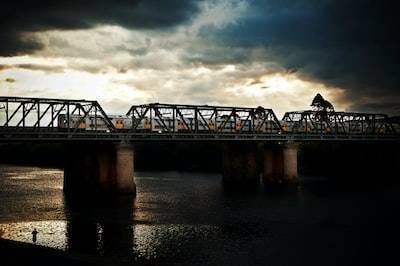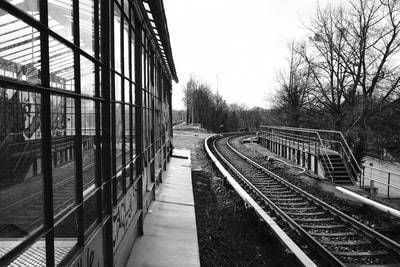Type of train in Canadian Rail Transit market
Rolling Stock Market in Canadian Rail Transit: A Historical Perspective
Introduction
The rolling stock market, particularly for Light Rail Transit (LRT) and tram procurement, has been a dynamic sector in Canadian rail transit over the past 50 years. A detailed look at the procurement patterns in five major Canadian cities—Vancouver, Calgary, Edmonton, Montreal, and Toronto—reveals a significant trend: every second half of each decade has been marked by a surge in procurement activities. This article delves into the data to uncover the historical procurement patterns and their implications for the future of Canadian rail transit.
Vancouver Rolling Stock Market
Vancouver’s procurement history shows a clear pattern of increased activity in the second half of each decade. The city acquired a substantial number of cars for its SkyTrain system during these periods:
– 1984–1986: 114 ICTS Mark I cars
– 1990–1991: 16 ICTS Mark I cars
– 1994–1995: 20 ICTS Mark I cars
– 2000–2002: 60 ART Mark II cars
– 2009: 34 ART Mark II cars
– 2010: 14 ART Mark II cars
– 2016: 28 Innovia Metro Mark III cars
– 2018–2020: 56 Innovia Metro Mark III cars
– 2009: 40 Hyundai Rotem EMU cars
– 2019–2020: 24 Hyundai Rotem EMU cars
Calgary Rolling Stock Market
Calgary has also seen significant procurement activities, particularly in the second half of the decades:
– 1979–1985: 83 Siemens–Duewag U2 cars
– 1988: 2 Siemens–Duewag U2 AC cars
– 2001–2006: 72 Siemens SD-160 Series 5/6/7 cars
– 2007–2012: 38 Siemens SD-160NG Series 8 cars
– 2013–2018: 69 Siemens S200 cars
Edmonton Rolling Stock Market
Edmonton’s rolling stock procurement has followed a similar pattern:
– 1977: 37 Siemens-Duewag U2 (RTE 1) cars
– 1980: 3 Siemens-Duewag U2 (RTE 1) cars
– 1983: 20 Siemens-Duewag U2 (RTE 1) cars
– 2005: 37 Siemens SD-160 cars
– 2010: 20 Siemens SD-160 cars
– 2018: 26 Bombardier/Alstom Flexity Freedom cars
– 2021: 46 Hyundai Rotem LRV cars
Montreal Rolling Stock Market
Montreal has consistently updated its fleet, particularly in the second half of the decades:
– 1965–1967: 336 MR-63 cars
– 1976–1980: 360 MR-73 cars
– 2015–2021: 639 MPM-10 “Azur” cars
Toronto Rolling Stock
Toronto’s procurement history is extensive, reflecting a robust rolling stock market:
– 1953–1954: 100 GRC&WG G-1 cars
– 1995–2001: 372 BT RTC-75 T-1 cars
– 1954–1955: 6 GRC&WG G-2 cars
– 1958–1959: 6 GRC&WG G-4 cars
– 1956: 28 GRC&WG G-3 cars
– 1962–1963: 36 MLW M-1 cars
– 1965–1966: 164 HSC RTC-75 H-1 cars
– 1971: 76 HSC RTC-75 H-2 cars
– 1974–1975: 88 HSC RTC-75 H-4 cars
– 1976–1979: 138 HSC RTC-75 H-5 cars
– 1986–1989: 126 UTDC RTC-75 H-6 cars
– 2009–2015: 480 Toronto Rocket cars
– 1921–1954: 250 Peter Witt cars
– 1922–1965: 100 Peter Witt cars
– 1921–1938: 60 2-door trailers
– 1923–1954: 165 3-door trailers
– 1938–1971: 317 PCC (Air-electric) cars
– 1947–1995: 428 PCC (All-electric) cars
– 1979–2019: 196 CLRV cars
– 1988–2019: 52 ALRV cars
– 2014–present: 204 Flexity Outlook cars
Réseau express métropolitain (REM)
The REM project in Montreal is a recent addition to the city’s transit infrastructure, with significant procurement in the past few years:
– 2018–2023: 212 Alstom Metropolis cars
Canadian Rail Transit Rolling Stock Orders
| City | Car Model | Year Manufactured | Quantity | Order Number(s) |
|---|---|---|---|---|
| Vancouver | ||||
| ICTS Mark I | 1984–1986 | 114 | 001–056; 061–118 | |
| ICTS Mark I | 1990–1991 | 16 | 121–136 | |
| ICTS Mark I | 1994–1995 | 20 | 137–156 | |
| ART Mark II | 2000–2002 | 60 | 201–260 | |
| ART Mark II | 2009 | 34 | 301–334 | |
| ART Mark II | 2010 | 14 | 335–348 | |
| Innovia Metro Mark III | 2016 | 28 | 401–428 | |
| Innovia Metro Mark III | 2018–2020 | 56 | 429–484 | |
| Hyundai Rotem EMU | 2009 | 40 | 101–120; 201–220 | |
| Hyundai Rotem EMU | 2019–2020 | 24 | 121–132; 221–232 | |
| Calgary | ||||
| Siemens–Duewag U2 | 1979–1985 | 83 | 2001–2083, 2090 | |
| Siemens–Duewag U2 AC | 1988 | 2 | 2101–2102 | |
| Siemens SD-160 Series 5/6/7 | 2001–2006 | 72 | 2201–2272 | |
| Siemens SD-160NG Series 8 | 2007–2012 | 38 | 2301–2338 | |
| Siemens S200 | 2013–2018 | 69 | 2401–2469 | |
| Edmonton | ||||
| Siemens-Duewag U2 (RTE 1) | 1977 | 37 | 1001–1014 | |
| Siemens-Duewag U2 (RTE 1) | 1980 | 3 | 1015–1017 | |
| Siemens-Duewag U2 (RTE 1) | 1983 | 20 | 1018–1037 | |
| Siemens SD-160 | 2005 | 37 | 1038–1074 | |
| Siemens SD-160 | 2010 | 20 | 1075–1094 | |
| Bombardier/Alstom Flexity Freedom | 2018 | 26 | 2001–2026 | |
| Hyundai Rotem LRV | 2021 | 46 | N/A | |
| Toronto | ||||
| GRC&WG G-1 | 1953–1954 | 100 | 5000–5099 | |
| BT RTC-75 T-1 | 1995–2001 | 372 | 5000–5371 | |
| GRC&WG G-2 | 1954–1955 | 6 | 5100–5105 | |
| GRC&WG G-4 | 1958–1959 | 6 | 5110–5115 | |
| GRC&WG G-3 | 1956 | 28 | 5200–5227 | |
| MLW M-1 | 1962–1963 | 36 | 5300–5335 | |
| HSC RTC-75 H-1 | 1965–1966 | 164 | 5336–5499 | |
| HSC RTC-75 H-2 | 1971 | 76 | 5500–5575 | |
| HSC RTC-75 H-4 | 1974–1975 | 88 | 5576–5663 | |
| HSC RTC-75 H-5 | 1976–1979 | 138 | 5670–5807 | |
| UTDC RTC-75 H-6 | 1986–1989 | 126 | 5810–5935 | |
| Toronto Rocket | 2009–2015 | 480 | 6131–6136; 6141/2/5/6; 6191/2/5/6 | |
| Peter Witt | 1921–1954 | 250 | N/A | |
| Peter Witt | 1922–1965 | 100 | N/A | |
| Flexity Outlook | 2009 | 204 | N/A | |
| Montreal | ||||
| MR-63 | 1966 | 369 | N/A | |
| MR-73 | 1976 | 423 | N/A | |
| MR-83 | 1980 | 171 | N/A | |
| MR-90 | 1990 | 140 | N/A | |
| AZUR | 2016 | 468 | N/A | |
| REM – Alstom Metropolis | 2018–2023 | 212 | N/A | |
Canadian Rail Transit Rolling Stock Orders Over Time
Rail Transit Rolling Stock Orders by Year
Canadian Rail Transit Rolling Stock Orders Every 5 Years
Conclusion
The data clearly indicates that every second half of each decade has been a peak period for rolling stock procurement in Canada’s major cities. This pattern suggests that procurement cycles are influenced by various factors, including technological advancements, population growth, and economic conditions.
Rolling stock procurement is often a sub-project of broader development and extension line projects, as well as part of asset management strategies. The observed trend shows that the first half of each decade is typically dedicated to the design and planning of civil works and system engineering by federal and municipal authorities. Consequently, the golden window for procurement and implementation tends to fall in the second half of each decade.
The 1990s was an exception to this trend. The combination of economic challenges, fiscal policies, and the aging of existing infrastructure contributed to a slower pace of infrastructure development in Canada during this period. These factors collectively resulted in fewer procurement activities compared to other decades.
Understanding these trends is crucial for future planning and investment in Canadian rail transit. As cities continue to expand and modernize their transit systems, the rolling stock market will remain a vital component of urban mobility, shaping the way Canadians commute and travel within their cities.
More Articles
Categories









Leave a Reply